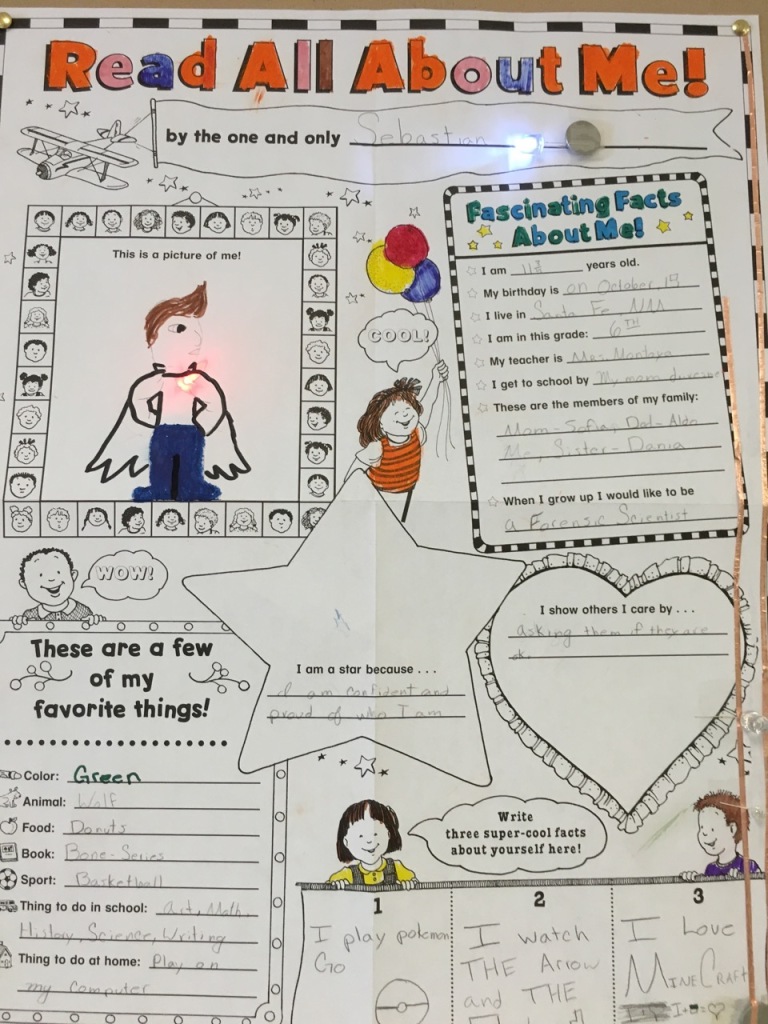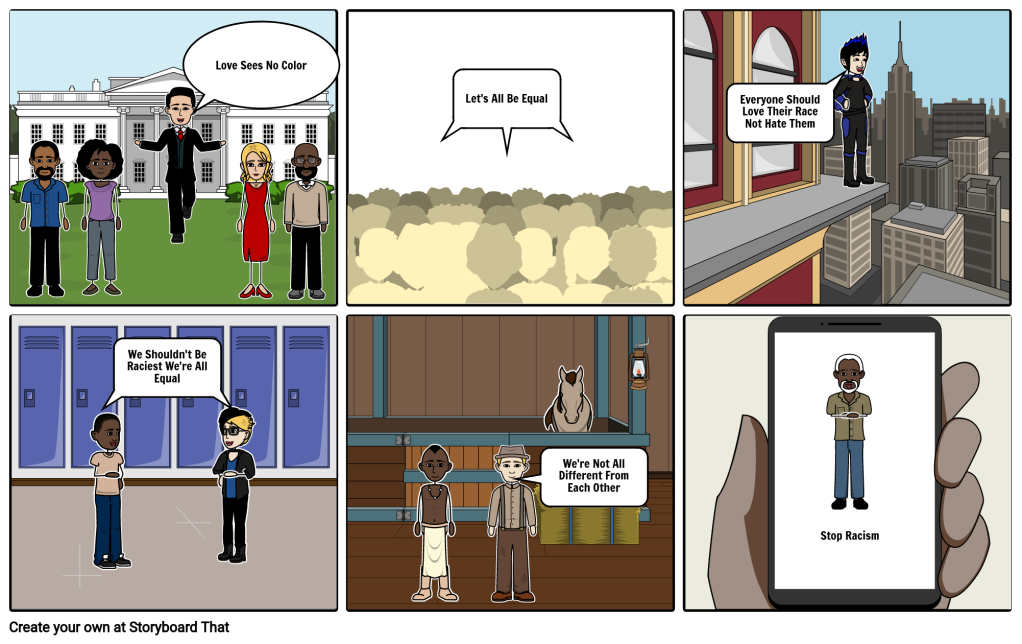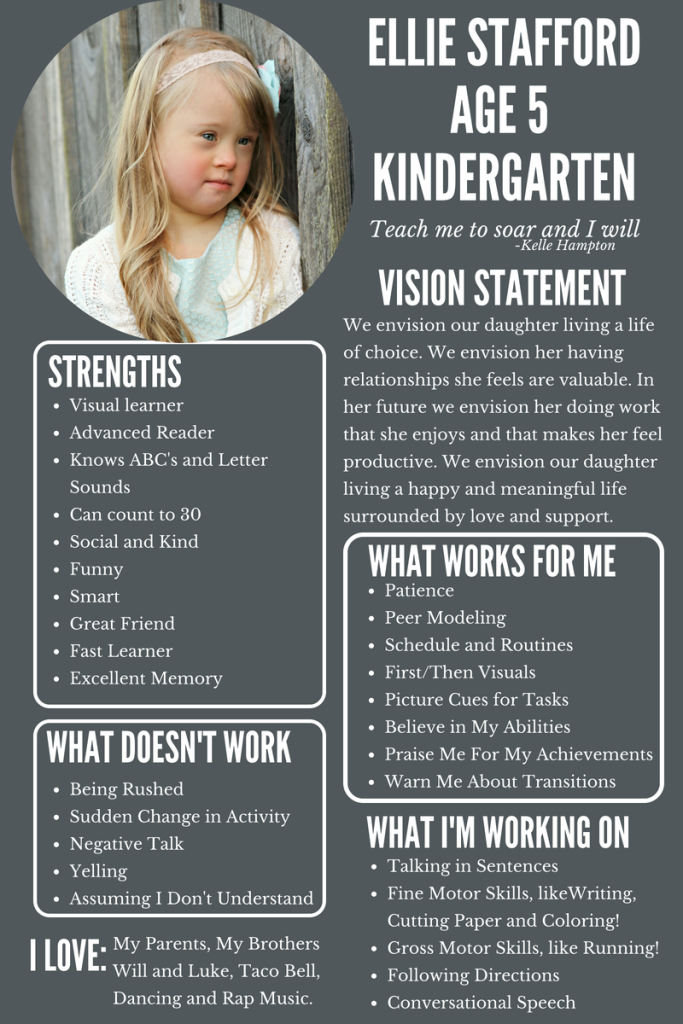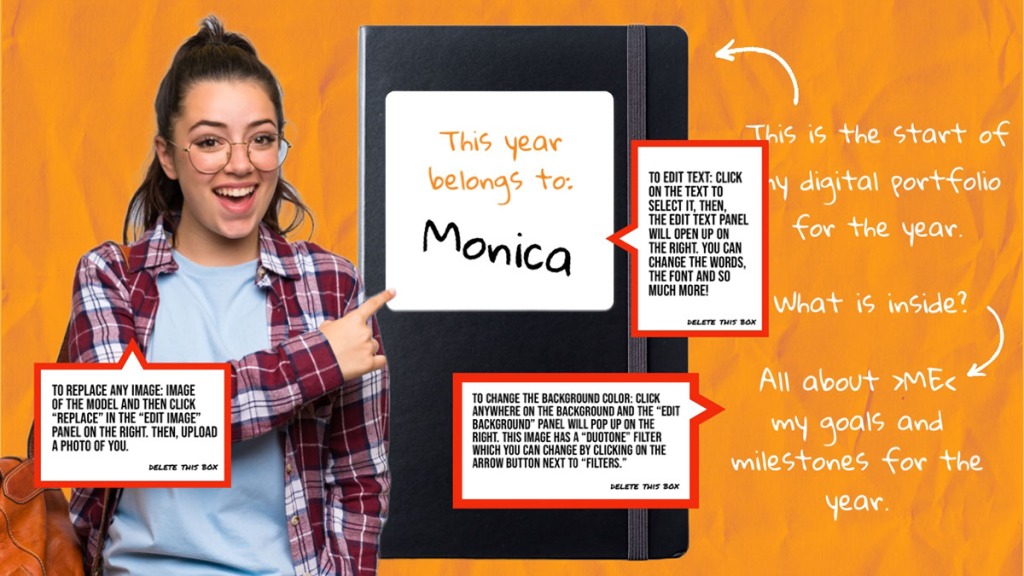Beginning the School Year with “Who I Am” Projects
It’s the start of a new school year. I am often baffled why teachers (all levels including college) jump right into covering content when the students are in a state of disequilibrium . . . wondering about the other students, the teacher, and the classroom climate. As such, I begin my classes with experiential, personal connections activities. During the first days of class, the messages I want to give my students, through these activities, include:
- I want to see and get to know everyone of you as unique individuals. For more about this, see Teaching as a Human – Humane Process https://usergeneratededucation.wordpress.com/2013/04/08/teaching-as-a-human-humane-process/.
- Student voice and choice is important. Whenever possible, I will give you a choice and voice regarding our learning activities. For more about this, see Today’s Education Should Be About Giving Learners Voice and Choice https://usergeneratededucation.wordpress.com/2015/08/09/todays-education-should-be-about-giving-learners-voice-and-choice/.
- The learning activities throughout the school year will be hands-on/minds-on and project based. For more about this, see Increasing Engagement, Creativity, and Innovation with Minds-On/Hands-On Activities https://usergeneratededucation.wordpress.com/2021/02/09/increasing-engagement-creativity-and-innovation-with-minds-on-hands-on-activities.
- We are a learning community where assisting and learning from one another will be an expectation.
- Content will be interdisciplinary. This means our learning activities will combine several content areas: language arts, math, science, technology, art. For more about this, see All Lessons Should Be Interdisciplinary https://usergeneratededucation.wordpress.com/2019/01/13/all-lessons-should-be-interdisciplinary.
The Activities
Here are some of the activities I am doing with my students during the first weeks of school:
- Bio-Bags
- Toss and Talk Balls
- All About Me Posters
- Vision Statement
- Family Picture Book
- Kahoot Selfie
- Fake Instagram
- Mask of Symbols
- Comic – the Change I’d Like to See in the World
Time is built in for students to do a show and tell of activities completed. They can decide which activities they want to do and in what order. See the following punchcard for more about this.
Punchcards for Accountability
Students receive their own punchcard (see below – printed on cardstock). When they finish an activity (they can be completed in any order), they come to me to show me. I ask them: (1) Did you fully completed the activity? and (2) Do you believe it is of a quality you believe is your best work (to avoid the let’s get it done quickly mentality)? If they say “yes” to both questions, I give them the hole punch so they can punch the two holes related to that activity.
Activity Descriptions
Bio-Bags
To begin, students bring an old but sentimental t-shirt to class. The shirt is made into a tote bag (see https://www.instructables.com/No-Sew-T-Shirt-Tote-Bag-1/).
Students are then given the following directions (taken from BioBags: Linking Literature and Life):
Choose any written works that have been important to you or that you love (you must have at least five written works) and bring them to school. You might bring the first book you could read by yourself, a letter that you like to read over and over, a special recipe, a favorite trading card, etc. Please try to include a variety of written works. You will get to tell the class why each
of the works is special to you and how it has impacted your life. Examples include:
- A story or a book that you used to love listening to when you were younger
- First books you were able to read by yourself
- Hobbies- any written works you could share that fit with those hobbies (e.g., a program from a play, a scorecard, a trading card, a how-to book, directions for a favorite game)
- Any special letter or e-mail received
- Favorite song lyrics
- A diary or a journal
- Any special certificates or awards you’ve won
- A favorite dish recipe
- Any books that you love to read over and over
Toss and Talk Balls
For this activities, pairs of students receive a beach ball and a sharpie. They make Toss and Talk Ball, and then play it with their classmates.
Here is a list from which the students can choose: https://museumhack.com/list-icebreakers-questions/
Vision Statement
For this activity, students create a Vision Statement about themselves using Canva or Adobe Express. Directions for doing this using Canva and examples can be found at: https://our3lilbirds.blogspot.com/2017/05/how-to-make-one-page-profile-ellie-style.html. Note that this activity was designed for parents to create visions statements for their special needs children (as is seen by the poster to the left). I am adapting it for my students so that they create their own Vision Statement/Profile sheet using the same sections as this poster and populating them with their own information.
Vision Statement
The template:
Student Examples
LED Enhanced All About Me Posters


I like using the All About Me posters at the beginning of the school year as it lets me know a lot about the learners in a very short time. I also use them to decorate my classroom walls. Since I have been involved in maker education, I show the kids how to use LED lights creating circuits with copper tape. They use these materials to create LED-enhanced All About me Posters.
Kahoot Selfie
Most teachers and students these days know about Kahoot, a game-based learning platform that makes it easy to create, share and play learning games or trivia quizzes. For this All About Me activity, learners create their own Kahoot Selfie with 5 or more Kahoot quiz questions about themselves, each question having a four possible answers with only one of them being correct. Here is a template to help them with planning – https://kahoot.com/files/2017/07/kahoot_paper_template-1.pdf and an actual Student Selfie Kahoot that they can duplicate and edit with their own questions and answers (they will need their own account to do so).
Fake Instagram Account
Because my learners are elementary age, they don’t (or shouldn’t) have their own Instagram account. This activity allows them to create their own (fake) one. The blog post, Fake Instagram Template with Google Slides (FREE), describes the process for doing this. This template – https://docs.google.com/presentation/d/1_gupBqIZBToioNFgbAb4nFVlsJgbdW5xneccto6pcFk/edit?usp=sharing – can be used by going under file to make a copy.
Here is my example:
Family Picture Book/ Cuadros de familia
This activity fits quite well with the Hispanic (the identifier used by the population with whom I work) heritage of the majority of my students. It begins by showing the students the following video:
They then use the following handout to create their books (taken from https://www.readwritethink.org/classroom-resources/lesson-plans/family-traditions-class-book):
A few adaptations that are used within my class are: (1) they can make the book as long as they choose, and (2) they can decide if they want to combine their books with other students in the class.
Mask Making
The full lesson for this activity can be found at Facing History’s What Aspects of Our Identities Do We Show to Others? which students are given access to work through independently:
Students will be making a mask that will be displayed in the classroom. The purpose of the mask is to answer the question, “Who am I?” To make their masks, students first have to decide how they want to present themselves to the class. Which aspects of their identities do they want to emphasize? Which aspects of their identities do they wish to conceal? Completing the Mask-making Preparation Worksheet can help students answer these questions before they begin crafting their masks. Before they begin, show students the materials they can use. In addition to markers and paper plates (or mask DIY which like Colorations® Cardstock Masks), old magazines are especially useful for this activity because students can cut out words and images. Also, inform students that they can decorate both the outside and the inside of the masks. They can use the outside to represent the aspects of their identities they openly show to the outside world and the inside to represent the more private aspects of their identities.
Here is the worksheet that goes along with this activity:
Comic Strip: A Change I’d Like to See in the World
For this activity, learners create a comic strip of at least 6 cells that describes a change they’d like to see in the world. I really like StoryboardThat and have an account for it so this is the platform my students use. Here is an example I found so learners can have an idea what to create:

Reflecting on the Activities
Once they successfully finish an activity, they are asked to reflect on it prior to going to the next activity. I use the blog platform, FanSchool (formally Kidblogs) to have them do so. FanSchool also has a direct connection for Flip (formally FlipGrid) so students who prefer to talk rather than write can do so. They show their project (inserting an image for writing, showing and telling for a Flip recording). During their reflections, they answer at least three of the following questions:
- What did you enjoy about the activity? What didn’t you enjoy?
- What did you learn about yourself?
- What were the most difficult parts of the activity? Why?
- What were the most satisfying parts of the activity?
- What positives can you take away from the activity?
- How have you been challenged during the activity?
- How do you feel about what you made? What parts of it do you particularly like? Dislike?
Standards Addressed
Common Core State Standards – ELA
CCSS.ELA-LITERACY.W.5.3
Write narratives to develop real or imagined experiences or events using effective technique, descriptive details, and clear event sequences.
CCSS.ELA-LITERACY.W.5.6
With some guidance and support from adults, use technology, including the Internet, to produce and publish writing as well as to interact and collaborate with others.
CCSS.ELA-LITERACY.W.5.10
Write routinely over extended time frames (time for research, reflection, and revision) and shorter time frames (a single sitting or a day or two) for a range of discipline-specific tasks, purposes, and audiences.
21st Century Skills
THINK CREATIVELY
• Use a wide range of idea-creation techniques (such as brainstorming)
• Create new and worthwhile ideas (both incremental and radical concepts)
REASON EFFECTIVELY
• Interpret information and draw conclusions based on the best analysis
• Reflect critically on learning experiences and processes
COMMUNICATE CLEARLY
• Articulate thoughts and ideas effectively using oral, written, and nonverbal communication skills in a variety of forms and contexts)
• Utilize multiple media and technologies, and know how to judge their effectiveness a priority as well as assess their impact
MANAGE GOALS AND TIME
• Set goals with tangible and intangible success criteria
• Balance tactical (short-term) and strategic (long-term) goals
• Utilize time and manage workload efficiently
WORK INDEPENDENTLY
• Monitor, define, prioritize, and complete tasks without direct oversight
• Be self-directed learners
NAGC (Gifted Education) Standards
1.1. Self-Understanding. Students with gifts and talents recognize their interests, strengths, and needs in cognitive, creative, social, emotional, and psychological areas.
1.2. Self-Understanding. Students with gifts and talents demonstrate understanding of they learn and recognize the influences of their identities, cultures, beliefs, traditions, and values on their learning and behavior.
1.3. Self-Understanding. Students with gifts and talents demonstrate understanding of and respect for similarities and differences between themselves and their cognitive and chronological peer groups and others in the general population.
1.5. Cognitive, Psychosocial, and Affective Growth. Students with gifts and talents demonstrate cognitive growth and psychosocial skills that support their talent development as a result of meaningful and challenging learning activities that address their unique characteristics and needs.
3.2. Talent Development. Students with gifts and talents demonstrate growth in social and emotional and psychosocial skills necessary for achievement in their domain(s) of talent and/or areas of interest
Written by Jackie Gerstein, Ed.D.
August 14, 2022 at 7:09 pm
Posted in Education, Maker Education
Tagged with experiential learning, maker education, social-emotional learning, student choice, student voice, student-centric learrning
2 Responses
Subscribe to comments with RSS.
Leave a comment Cancel reply
This site uses Akismet to reduce spam. Learn how your comment data is processed.



Thank you for sharing these activities. I would like to use these activities in the future for my classes. I particularly like the comic strip activity. Having students create comics about changes they would like to see in the world could help me learn more about who my students are and what classroom activities they would like to do. Reflection after the activities is also a wonderful idea because it encourages students to utilize 21st-century cognitive skills.
Bethany Moore
October 15, 2022 at 6:50 am
Thanks!
Jackie Gerstein, Ed.D.
October 20, 2022 at 2:15 pm